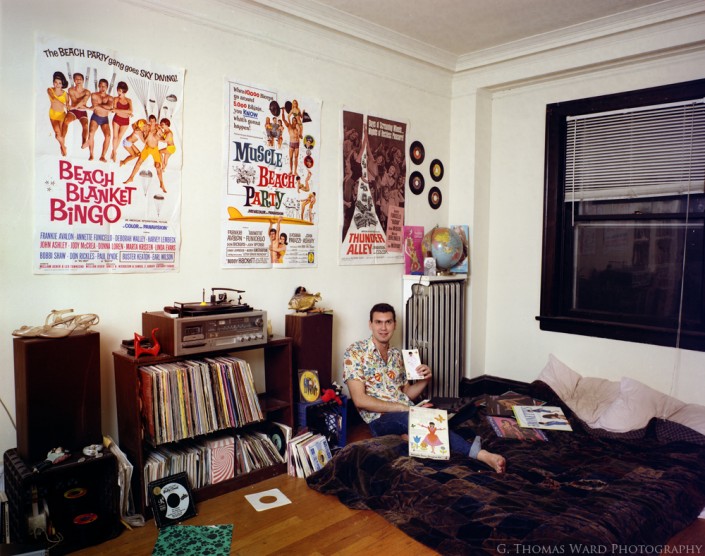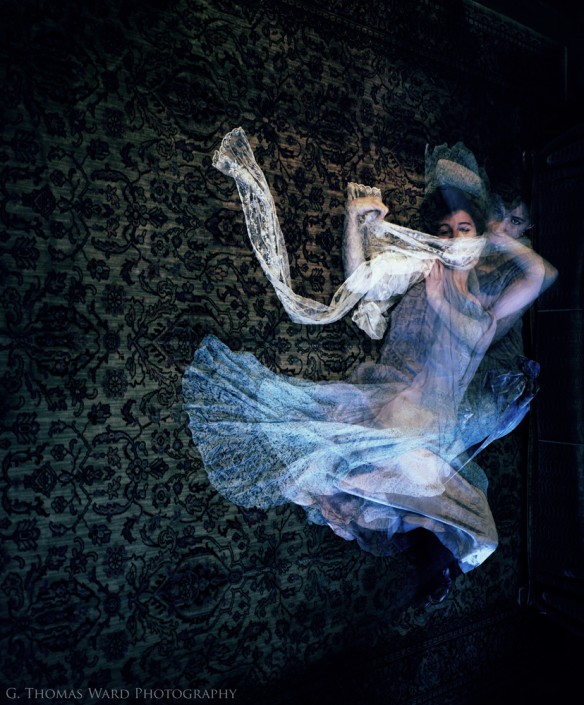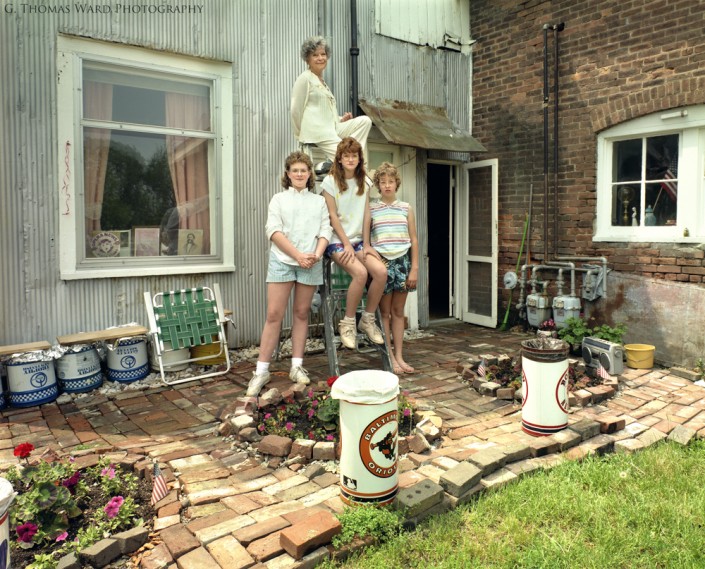After my first few photography classes and trying my hand at a variety of photographic genres, I took a class in large format photography and the view camera. Even though the age of film photography is for all practical purposes dead, most people over the age of 30 are probably somewhat familiar with 35mm cameras. But view cameras use negatives that are 4×5 inches or larger…so, the negative is roughly 15 times larger than a 35mm negative. They’re the kind of cameras you see in old black and white movies with the photographer’s head under a black cloth. For some reason, I took a liking to this medium, perhaps because none of my classmates were particularly into it, or maybe it was because of the unique ability of the medium to capture detail with a clarity way beyond 35mm.
Throughout most of my time as an undergrad, I worked in a store called “Rosie Cheeks Vintage Clothing” which was a legendary local hang out for all sorts of fascinating people: artists, gays musicians, dandies and other assorted self-styled hipsters and misfits of the era. I was looking for direction with my photography work and it occurred to me to do portraits of some of our more colorful customers. I believed the 4×5 format, with its ability to capture detail, would be the perfect medium for this kind of work.
Shooting what I loosely called “The Collectors” series, was really the beginning of my taking myself seriously as a photographer. I wasn’t just “taking” pictures, I was making them. And my teachers also started to take me seriously as a photographer. I worked on this series through the time I graduated with my BFA in photography in 1987. On the strength of the work, I applied for the Mary C. McClellan Scholarship in Art and was awarded the top award for the year, beating out all other applicants from any artistic medium at my school. With the money, I undertook the my next project in my post-graduate life, the “Route 40-From St. Louis to Terre Haute” series. But I’ll show and tell more about that in my next post.











